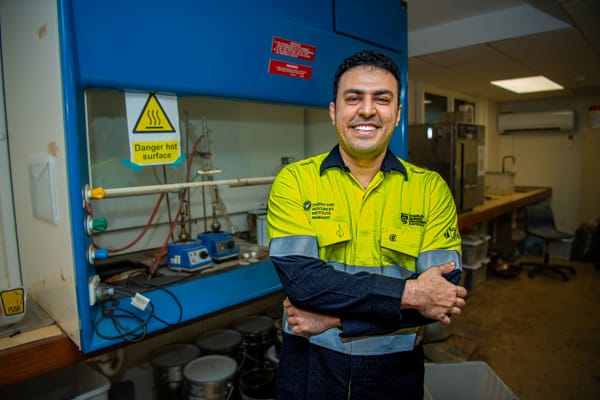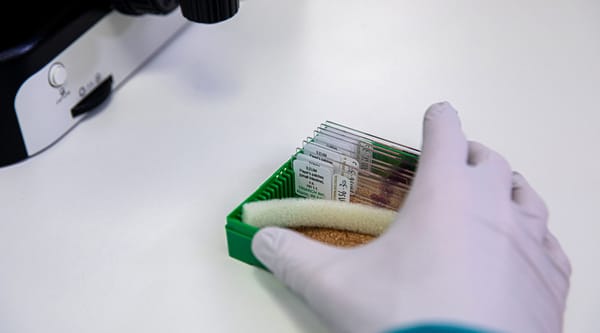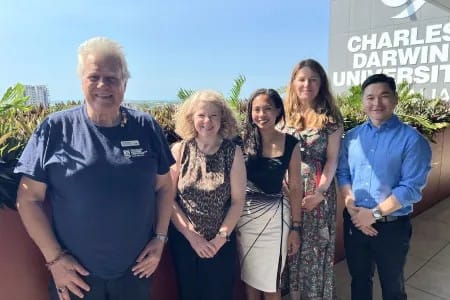New lung biopsy procedure revolutionises cancer diagnosis process
Macquarie University Hospital respiratory specialists have devised an ingenious combination of existing equipment that can do the work of a million-dollar surgical robot for a fraction of the cost.
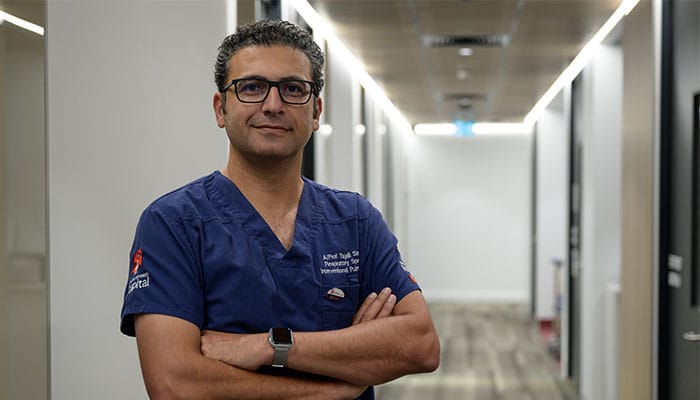
First published on Macquarie University
Lung cancer is the most common cause of death by cancer in Australia, with 14,000 new cases diagnosed every year.
For many, this terrifying diagnosis begins with the discovery of one or more lung nodules.
Early on, these nodules are less than one centimetre in diameter and are often located deep in the lung, making them difficult to biopsy using traditional methods for even the most skilled physicians.
Up to 20 per cent of such procedures fail to get a viable sample, while another 20 per cent result in serious complications such as a collapsed lung, or bleeding that is difficult to control.
With tens of thousands of tiny branches and a surface area roughly the size of a three-bedroom house, lungs are incredibly complex, and taking a biopsy from a one-centimetre nodule in the lungs can be a significant challenge. Reaching a nodule means not only guiding the needle to the correct location but also holding the equipment still during the procedure.
Computed tomography (CT) scans taken while the patient is awake may be of limited use once they are anaesthetised, and even the camera at the end of the flexible bronchoscope cannot assist much with inserting the needle if the nodule is not in an airway.
Until recently, the only options for many patients with small nodules were to undergo surgery to remove them without a diagnosis or to wait for them to grow bigger.
Early detection and treatment is the key to improving patient outcomes in lung cancer. We’re incredibly excited about this procedure and about sharing what we’ve learned.
A new generation of high-tech medical robots that incorporates live imaging technology can guide doctors to the correct site, provide the stability needed to take the sample, and reduce both complication and failure rates.
However, this equipment is in the million-dollar-plus range, making it an impossible dream in a lot of countries and out of reach for many Australian public hospitals.
Thinking outside the (robotic) box
Macquarie University interventional pulmonologist, Professor Alvin Ing, and respiratory physicians Associate Professor Tajalli Saghaie and Associate Professor Jonathan Williamson were involved in a clinical trial of one of the robotic devices.
After the trial, the team began looking for alternatives that would achieve the same result at a reduced cost to ensure they would be accessible to more hospitals.
With an existing Philips Azurion Interventional Lab that is already used by many vascular surgeons for live image guidance, they acquired a Cone Beam Computer Tomography (CBCT) data set, which was used to map access to the target lesion.
Combined with specialised software developed by the manufacturer, a surgical clamp, and the expertise of Macquarie University Hospital anaesthetists, the team has been able to reach deep into patients’ lungs, accurately biopsying nodules as small as six millimetres in diameter and slashing the complication rate to less than one in 100.
They have recently performed their 100th biopsy using this new technique, which was first trialled in May 2023. As word spreads, they expect to receive referrals to double that number by the end of this year.
Out of the 100 procedures they have performed so far, they have diagnosed cancer in 67 cases, allowing those patients to begin treatment immediately and providing peace of mind to the others.
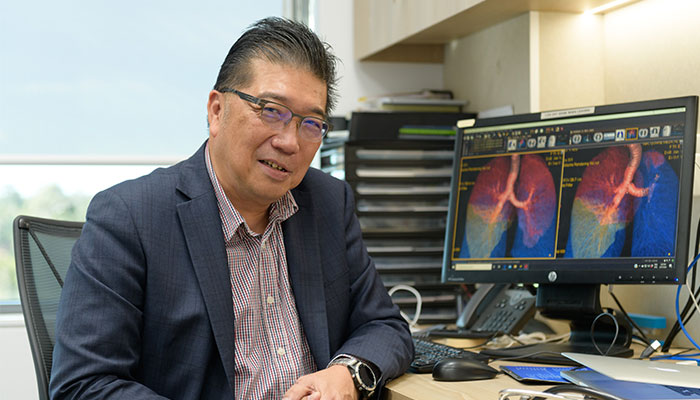
Associate Professor Saghaie says equity was an extremely important motivating factor in their research.
“Not every hospital can afford a million-dollar surgical robot, but if they have a vascular surgeon or an interventional cardiologist, then it’s very likely they already have the right CT scanner,” Associate Professor Saghaie says.
“Early detection and treatment is the key to improving patient outcomes in lung cancer. If we can see a nodule that we can’t get to, it’s incredibly stressful and upsetting for the patient to have to choose between waiting for it to grow bigger or having surgery that they may not need.
“The National Lung Cancer Screening Program begins in July 2025, with the aim of preventing at least 500 lung cancer deaths a year in Australia, but for it to have any meaningful benefit, early-stage biopsies need to be more widely available.
“We’re incredibly excited about this procedure and about sharing what we’ve learned.”
The technique has been adopted by other public hospitals in New South Wales, and doctors from Victorian and Western Australian hospitals are set to visit in the next month to learn it.
Professor Ing and Associate Professor Saghaie are planning a workshop at Macquarie University Hospital later in the year, followed by interstate and overseas workshops in 2025 to maximise training opportunities.

